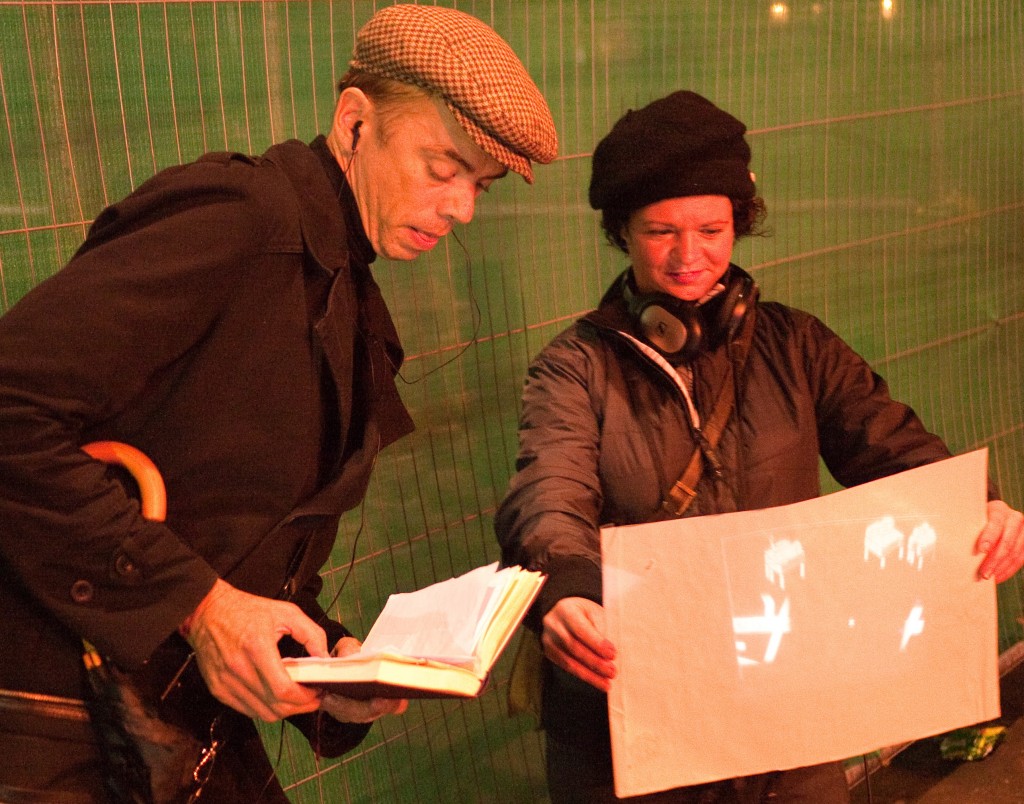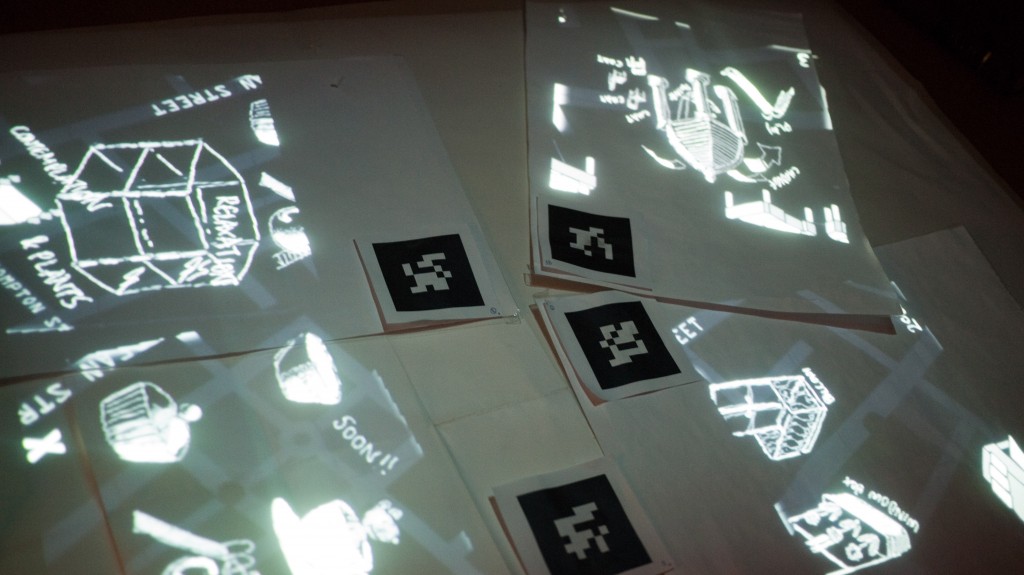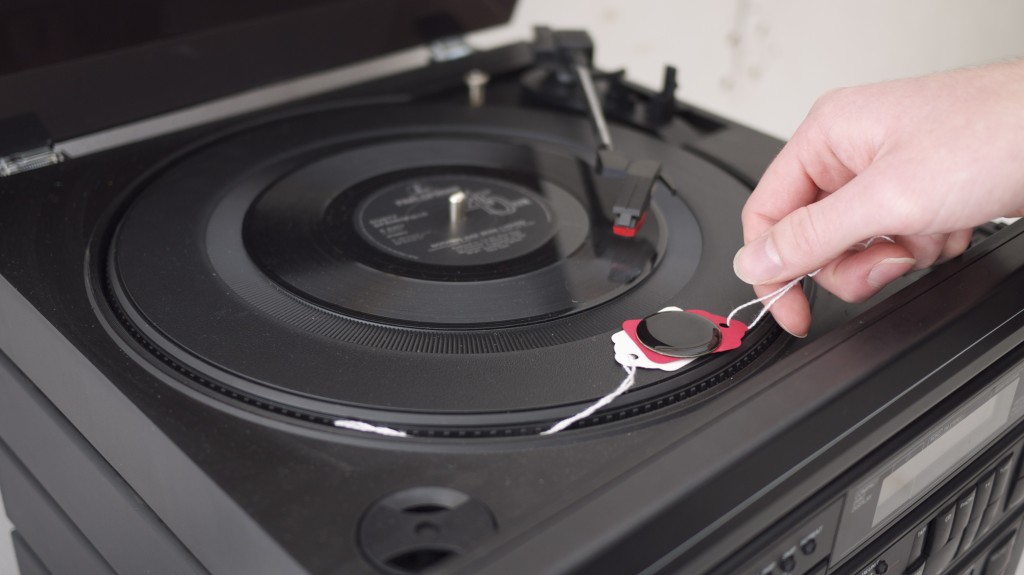Last year I was lucky enough to be selected by the Cultural Leadership Programme to spend a year on a professional development and work placement down in Bristol. So I put my usual job of making new theatre performances on the back-burner and headed down the M5.
My year was spent working as part of the small but highly effective iShed team, which is based at the Pervasive Media Studio, and is a part of the larger organisation and venue Watershed.
My task was to help shape and then produce the first year of Theatre Sandbox – a national commissioning scheme for theatre companies to engage with emerging technologies in their practice.
Except the thing was, I didn’t know anything about these technologies myself… yet. But this is why I’d applied for this placement – to learn. And learn I did.
… RFID … wifi beacons … interaction design … augmented reality … QR codes … arduino … bio feedback sensors … these words floated around me, and eventually began to settle as I saw and experienced concrete examples of them being used in practice.
I learned most things through a kind of Pervasive Media Studio osmosis. Just overhearing people’s conversations, lectures, lunchtime talks and workshops introduced me to a slew of new vocabulary, possibilities, hardware and software.
And just a few short months after my own first introduction to Pervasive Media (here’s some definitions of this diverse field) I started to lead our six commissioned Theatre Sandbox theatre companies into how they might incorporate these technologies into their own projects and practice.
It was incredibly exciting to see how experimental theatre practice could have a dialogue with experimental technologies – each one’s processes, restrictions, affordances and modus operandi affecting and influencing the other.
I found it interesting to observe how different the usual process of theatre making: end goal make-or-break
(idea ? develop content ? refine, perfect, edit ? assemble acting, design, sound elements ? performance of finished show in front of audience ? reviews)
was to the process of technology development: iterative
(idea ? sketch version ? test with users/audience ? integrate feedback, create prototype ? test with users/audience ? integrate feedback, refine product ? release finished product).
Sometimes during Theatre Sandbox these two processes seemed directly at odds with each other, and it will take more than just this one pilot project to re-educate both communities in how to contextualise and best offer feedback to these kind of projects whilst in development. It felt daunting and precarious for the theatre artists to test their work at such early stages in its development, but such testing was essential for the development of the technologies and the experience as a whole.
I was pleased to discover that some of the core skills of theatre artists were particularly valuable within the sphere of technology development. Where some technology developers may be guilty of getting caught up with how cool their new tech is without much thought for their users, how it actually is to use, whether its useful or fun. Theatre’s focus on the audience and on their experience of what is presented to them dovetailed neatly with technology’s system of user interaction design. Theatre artists naturally considered their user/audience’s interaction with the technologies and the work, often finding cunning and ingenious ways to make the hardware and interactions part of the fictional and aesthetic world of the performance.
Theatre artists are also adept at weaving stories, and creating meaning from potentially disparate incidents and experiences. The Theatre Sandbox projects successfully integrated technologies but never became obsessed by the tech for its own sake – the story and audience experience always remained the focus, and this is what ensured that the projects were genuinely engaging for their audiences.
Please do watch this short overview video of the scheme featuring extracts from all six projects, narrated by myself, and shot and edited by Birmingham’s own Chris Keenan.
I completed my placement in December 2010, and am now back in Birmingham eager to start using my new-found skills in this region: helping others develop projects; brokering arts and technology partnerships; and creating new theatre productions that integrate pervasive media with my own company The Other Way Works.
—————
By Katie Day
Katie Day is the Artistic Director of Birmingham-based theatre company The Other Way Works who have been pushing the boundaries of theatre practice for around eight years now, and produce site-specific audience-interactive performances like our hotel-based thriller ‘Black Tonic‘.
www.theotherwayworks.co.uk





Listening to Katie Day talk about her year professional development with Theatre Sandbox 2010 seems to me an enormously positive step for the arts organisations. Could it be that the arts community is finally coming to grips with technology? I’ve always wondered why this segment of society has made so little use of the advancement in science, given that one could use the logic of: what is it that artists don’t have much of – money. What is it that technology has an abundance of – the ability to make money unnecessary. Seems to me a match made in heaven, technology and art.
With org names like Analog and iShed, arts groups appear to be at least setting one foot into the future, but still holding firm to what’s worked in the past, so early days yet. Still, any advancement by the arts community is necessary for the greater public good.
In fact, it continues to amuse me hearing comments like, “…not about creating technology-obsessed media” or “…isn’t led by technology or dictated by technology but using technology that is really good and engaging for audiences”. Frankly, since these sorts of rejoinders first appeared in the early 1980s, I didn’t think I’d ever stop hearing them. But the nail in the coffin of this phobia might just be that arts groups are finally bending technology to their own will. Yay! I think we’ve finally gotten everyone on board the good ship, when does she set sail? (apologies for the use of analog metaphor)
It appears so many good ideas have come from this effort, (especially the ones that don’t involve an expensive and at times unnecessary theatre space), and I can’t wait to see the prototypes placed in public. I’d say it was a year well-spent, Katie Day, especially for the common good. You should do this more often.
Theatre Sandbox » News » Theatre + Technology = ?
[…] Katie Day, who produced Theatre Sandbox, has written a post for Created in Birmingham about her Cultural Leadership Programme Placement with us. Read it here. […]